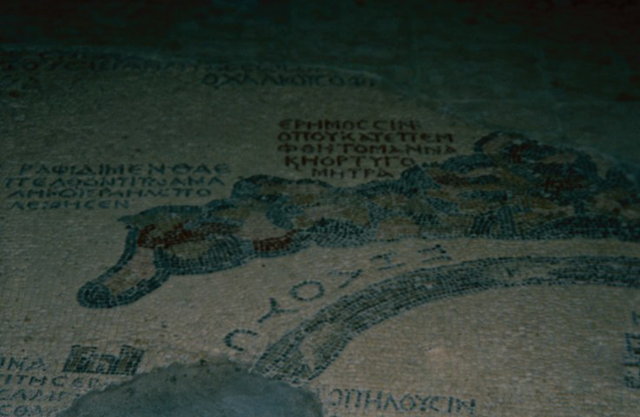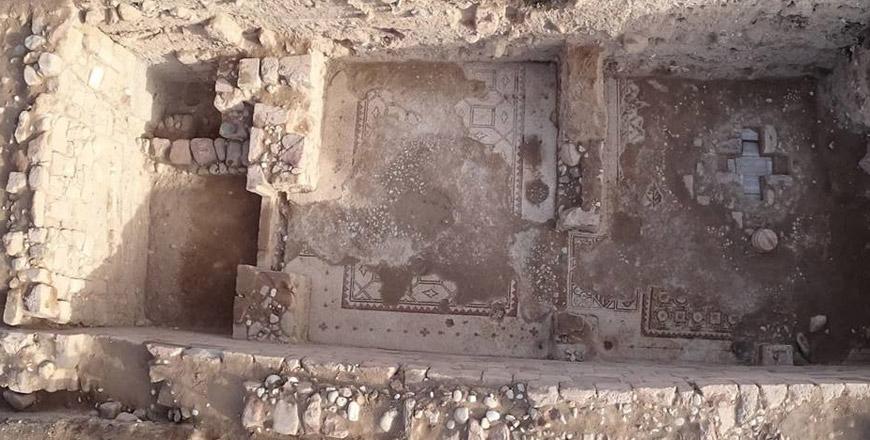You are here
Swiss archaeologist examines settlement continuity in Petra
By Saeb Rawashdeh - Feb 20,2023 - Last updated at Feb 20,2023

A view of the ruins of an Ottoman building in Petra (Photograph by Ulrich Bellwald)
AMMAN — A Swiss architect and archaeologist has been studying the Nabataean agricultural production in the area around Petra where he carried out a survey between Al Hai and Rasan Naqab that offered a glimpse into the continuity of early settlements.
“I tried to study visible architectural remains that will show continuity in the settlements from the Nabataean to Islamic period, and on April 3 2018 we inspected the ruins of an Ottoman one-room house, where we found a floor with slabs of broken mosaic patches,” noted Urlich Bellwald.
He added that after having cleaned superficially the northeastern-angle of the room, it became obvious that the Ottoman building was erected on the foundations of a Byzantine construction.
This Byzantine construction was most probably a church or a chapel with a mosaic floor, Bellwald speculated, adding that in the cleaned northeastern-angle the mosaic floor was fully preserved.
“From people living in the next villages the author got to know that years before the mosaic floor was still completely preserved, but later partially destroyed by looting, mainly in the centre of the room,” Bellwald said, adding that the building sheltering the mosaic floor is a well-preserved Ottoman one-room house.
“There is a door from Ottoman period in the central axis of the East façade and, the house is used as a stable for sheep; therefore the surface of the mosaic floor is covered with compacted sheep dung,” Bellwald said.
Regarding the mosaic, the team learned from people living in the modern villages in the neighbourhood that years before, when the mosaic floor seemed to have been intact, other squares with birds and other animals were visible, Bellwald said, adding that the centerpiece of the floor seemed to have shown a big bird.
“The technique adopted for the layout of the mosaic floor is rather course; the single tesserae are not of regular square shape and of rather big dimensions. As far as may be seen there are no tesserae made from coloured glass, as used for the allegories of the seasons in the south aisle of the Petra Church,” the scholar elaborated.
The geometric pattern of the angle square is strikingly similar to the central medallion of the same mosaic on Jabal Haroun, Bellwald noted, adding that the same close relation may be established with the central medallion of the floor mosaic in the area.
“Fortunately there is a fragment of a third mosaic floor known in the region which shows the same geometric patterns and the same coarse technique in the craftsmanship. It was excavated by a team of the Department of Antiquities in 2002 in the church of Mary at Rashadia and is dated by a dedicatory inscription panel to the year 574 AD,” he added.
“It is therefore obvious that the mosaic floors in the church of the monastic complex on Jabal Haroun, area A church at Gharandal, the Rashadiyah church and in the Ottoman house were all executed in the 2nd half of the 6th century AD by the same, most probably by a local workshop,” Bellwald said.
Related Articles
AMMAN — Mosaics decorated some of most prestigious buildings in the Ummayad Caliphate: Bath houses, mosques, palaces and private villa
AMMAN — Between 1997 and 2013, the Finnish Jabal Haroun Project (FJHP) has carried out archaeological excavations at a Byzantine monastery l
AMMAN — Modern Ghor Safi, located at the southeastern end of the Dead Sea near the lowest point on earth, has been populated for over 12,000














